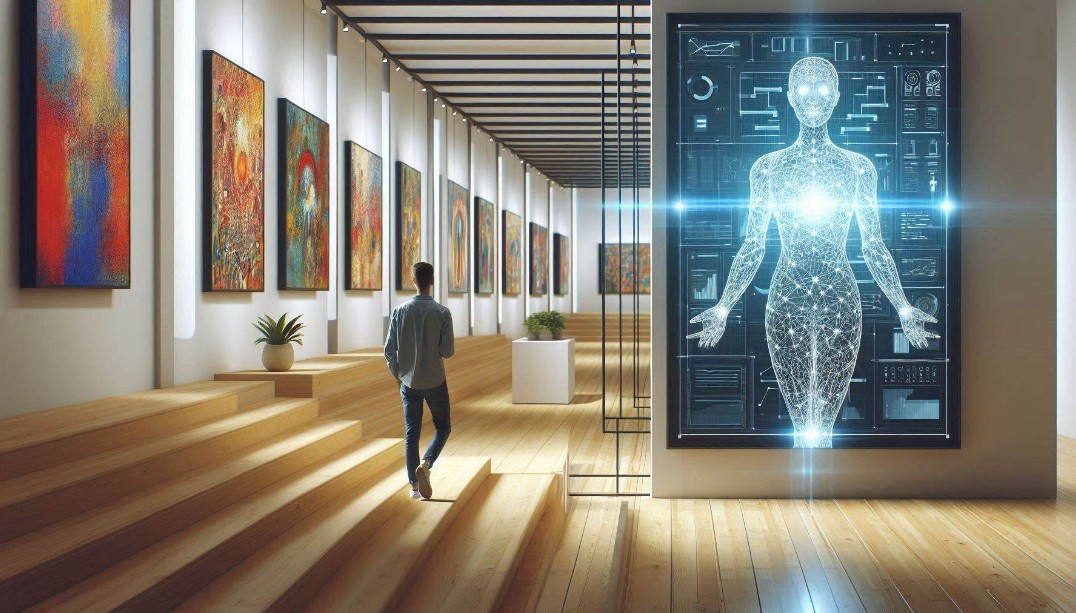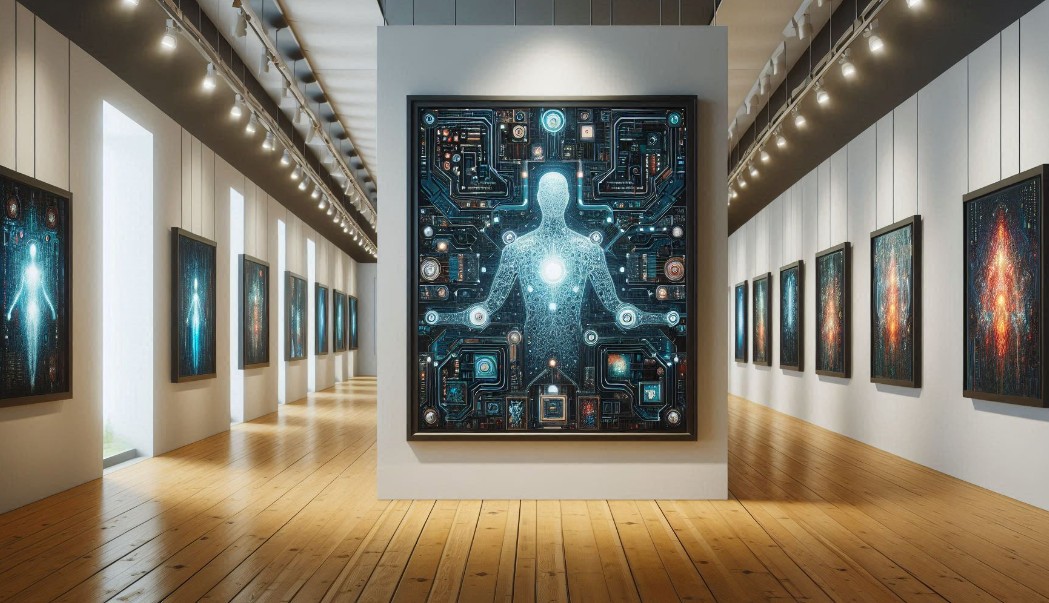In recent years, there has been a significant advancement in the field of Artificial Intelligence (AI) and Augmented Reality (AR). These technologies have become increasingly popular and have the potential to enhance virtual experiences in various fields such as gaming, education, healthcare, and...
Artificial intelligence curates a digital gallery showcasing contemporary art.

The convergence of technology and creativity has reached a remarkable milestone with the advent of artificial intelligence (AI) curating its own virtual museum of contemporary art. This innovative initiative transcends traditional boundaries, offering a digital haven where art enthusiasts can explore, appreciate, and interact with modern masterpieces from the comfort of their homes.
At the heart of this groundbreaking project lies an AI with the capacity to analyze, learn, and exhibit contemporary artworks in a virtual environment. By leveraging machine learning algorithms, the AI not only selects pieces based on their artistic value and relevance but also organizes them into cohesive and engaging collections. This dynamic approach ensures that each visitor's experience is unique, tailored to their preferences and interests.
The virtual museum stands as a testament to the transformative potential of AI in the arts. It democratizes access to contemporary art, breaking down geographical and socioeconomic barriers that have traditionally limited exposure to cultural experiences. Furthermore, the AI's ability to provide insightful commentary and context enhances the educational value of the museum, making it an invaluable resource for both casual art lovers and serious scholars.
As we navigate this new era of digital curation, the AI-powered virtual museum exemplifies how technology can enrich our cultural landscape. It invites us to reimagine the possibilities of art curation and consumption, heralding a future where the fusion of artificial intelligence and human creativity opens up uncharted realms of artistic exploration.
Exploring the Virtual Art Gallery
Stepping into the virtual art gallery is like entering a boundless realm where creativity knows no bounds. Each click and scroll unveil a curated collection of contemporary masterpieces, spanning diverse styles and mediums.
As you navigate through the meticulously designed virtual spaces, you can pause at each artwork, zooming in to admire intricate details that might be missed in a physical gallery. The experience is enhanced by interactive features that allow you to learn about the artist's inspiration, techniques, and the cultural context behind each piece.
Unlike traditional museums, the virtual environment offers a dynamic exploration where you can customize your journey. Whether you prefer to follow curated paths or venture off the beaten track, the virtual art gallery adapts to your pace and interests.
Immersive technologies bring these artworks to life, offering a closer look at how AI intersects with contemporary art. From algorithmically generated pieces to interactive installations, the virtual gallery showcases the forefront of artistic innovation in the digital age.
Exploring the virtual art gallery isn't just about viewing art–it's about experiencing a convergence of technology and creativity, where the boundaries between the real and virtual blur, opening new dimensions for artistic expression and appreciation.
Immersive Experience in Virtual Reality
Virtual reality (VR) transforms the way visitors interact with art in the digital realm. By donning VR headsets, users are transported into a fully immersive environment where they can explore artworks as if they were physically present. The sensation of depth and scale adds a new dimension to the viewing experience, allowing for closer examination of details that might be missed in traditional settings.
Through VR technology, users can navigate through curated exhibitions, interact with artworks using virtual tools, and even participate in interactive installations that respond to their movements and gestures. This level of engagement breaks down barriers between the viewer and the art, fostering a deeper connection and understanding of contemporary artistic expressions.
| Enhanced Engagement | Users are more engaged with artworks due to the immersive nature of VR experiences. |
| Accessibility | VR allows people from around the world to access and experience art exhibitions remotely. |
| Education | VR provides educational opportunities by offering context and information about artworks in real-time. |
| Interactivity | Interactive elements in VR exhibitions encourage active participation and exploration. |
Overall, the use of virtual reality in creating a virtual museum of contemporary art not only enhances the accessibility and reach of art but also revolutionizes how audiences engage with and appreciate artworks in the digital age.

Curatorial Challenges and Innovations
In curating a virtual museum of contemporary art driven by artificial intelligence, several unique challenges and innovative solutions emerge:
|
1. Diversity in Curation Traditional curatorial practices often reflect human biases and preferences. AI presents the opportunity to curate art that represents a broader spectrum of styles, cultures, and perspectives, thereby promoting diversity in the virtual museum. |
|
2. Ethical Considerations AI algorithms may unintentionally prioritize certain artists or art styles based on data biases. Curators must ensure fairness and ethical considerations in the selection and representation of artists in the virtual museum. |
|
3. Dynamic Exhibition Design Unlike physical museums, virtual spaces allow for dynamic exhibition designs that can change over time or adapt based on user interactions and feedback. Curators can experiment with interactive displays and virtual environments to enhance visitor engagement. |
|
4. Accessibility and Inclusivity AI-powered museums can be designed to be accessible to a wider audience, including people with disabilities who may face barriers in traditional museum settings. Curators can implement features such as audio descriptions, text-to-speech capabilities, and customizable user interfaces. |
|
5. Collaborative Curation AI can facilitate collaborative curation efforts by analyzing feedback and preferences from a global audience. Curators can leverage this data to curate exhibitions that resonate with diverse cultural and societal backgrounds, fostering a sense of global participation and community. |
Impact on Accessibility and Education
Artificial intelligence-driven virtual museums of contemporary art significantly enhance accessibility to cultural artifacts and educational resources. Here’s how:
- Global Accessibility: Virtual museums break physical barriers, allowing anyone with internet access to explore artworks from around the world.
- 24/7 Availability: Unlike traditional museums with operating hours, virtual museums are accessible anytime, accommodating diverse global time zones.
- Enhanced Learning Opportunities: AI algorithms can curate personalized learning experiences, tailoring exhibitions based on users' interests and educational needs.
- Inclusivity: Virtual museums are accessible to individuals with physical disabilities, providing equal opportunities for cultural engagement.
- Cost-Effective Learning: Access to virtual museums eliminates the need for costly travel, making cultural education more affordable and sustainable.
Overall, AI-powered virtual museums democratize access to art and education, fostering a more inclusive and enriching cultural landscape globally.



